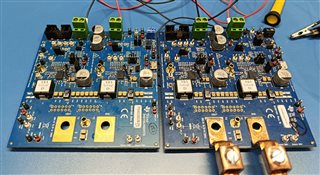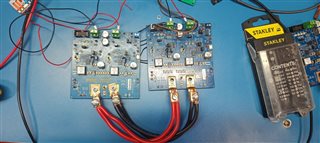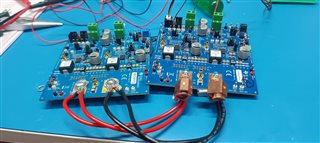Other Parts Discussed in Thread: TPSM8D6C24, TPS546D24A,
Tool/software:
Hello
I am facing problems in 4 phase stacking. by using TPS546D24SEVM i was able to do 2 phase stacking now by using 2 TPS546D24SEVM i am trying for 4 phase stacking. i am not getting any communication error as i can see on BCX_CLK and BCX_DAT communication happening with followers. i will explain my setup it is as follows
1.I am using 2 TPS546D24SEVM in that for configuration i am using PMBUS programing not using Pin strapping method storing all values in NVM and doing pin detect override 0x0000.
2.STACK_CONFIG is 0x0003 and INTERLEAVE is 0x0040,0x0041,0x0042,0x0043 for master followed by 3 followers
3.for 2 EVM i am connecting BCX_CLK, BCX_DAT, SYNC, VSHARE and GROUND to each other
4.To make follower i am making sure that GOSNS pin is connected to BP1V5 by using 10k resistor in EVM that is R8_P1, R8_P2 and in 1st EVM R8_P2
5.i have made sure that VSEL, MSEL1, ADRSEL are all connected to AGND in follower.
6. for PGD/RST i have removed R26 which is connected to BP1V5. and connected it to PGND as per datasheet
7. VOSNS pin i have connected to PGND in SLAVES




from right side 1st is master and others are follower.
problem i am facing is
1.as when i set voltage for 1 st evm where master is connected voltage setting is correct. but at other EVM voltage is setting higher and its keep on increasing that is why i am getting OVER_VOLTAGE_WARNING error
2.i tried to connect output of both as well together but voltage is getting equalised from left EVM to right one
any more hardware changes are required please let me know.
Thank you for any help suggestion in advance
Thanks
Parth



